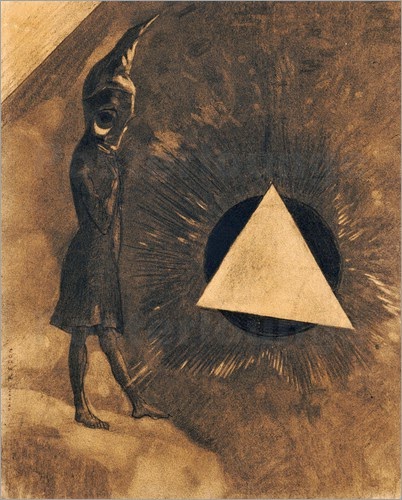New schools for Brendan’s spells without levels. (Spell duration is caster’s level by default.) It’s more Dark Souls-inspired stuff.
I’ve been wanting to play around a little bit with subclasses and Spells Without Levels (or Wonders and Wickedness, the quite good book complication). Gating certain spell schools behind alignment seems like a good and simple start, but requiring a sorcerer to learn from an NPC is another good option.
This post largely assumes you’re using Original Dungeons and Dragons or Delving Deeper, but it shouldn’t be too hard to adapt to another ruleset.
Contrarian Alignment
Lawful is primordial darkness, an awful and immaculate stillness, the deceased Titan-esque old order of gods, the undead. It is the nature of Dark and Law to be changeless, unending, antithetical to mortals.
Chaos is light and day, the fire of the Sun but also Hell. The new order of gods, as well as demons, are Chaotic; It is the nature of Chaos and Light to be vital, changing, but also temporal. Chaotic creatures might be extremely long lived, but none of them are immortal.
Hexes
A strange and profane school of magic draw from the primordial dark that covered the Earth before time began. Only Lawful sorcerers can learn and cast hexes.
 |
| by inoue takehiko |
- Anaesthesia: one creature must save or lose the use of one of its senses (touch, taste, sight, smell, hearing), chosen by the sorcerer, for the duration of the spell.
- Darkness: the sorcerer screams, and all ordinary sources of light (torches, bonfires, lamps, lightbulbs) in earshot immediately extinguish and cannot be relit for the duration of the spell.
- Become Hexbeast: a sorcerer twists into a vaguely anthropomorphic and ivory-masked version of one of the following creatures, their face concealed behind an ivory mask. A sorcerer rolls randomly the first time they cast this spell, but afterwards turn into the same hexbeast every time. There is a way to make this spell permanent, at terrible cost. Sorcerers can still cast spells while a hexbeast, and retain their HP and HD.
- Ape
- Crocodile
- Giant Bat
- Giant Spider
- Wolf
- Young Roc
- Howl: the sorcerer howls, and all living creatures in earshot must make a Morale check
- Summon Phantom: the sorcerer calls forth the ghost of a dead humanoid. This hex requires that the sorcerer know the phantom’s name or have one of their dear possessions. The phantom has the same abilities and attributes as they did in life. If the sorcerer has more HD than the phantom, it will serve them loyally for the hex’s duration; otherwise, it must be convinced to take a particular course of action.
- Elegy: causes an immortal or inhuman being (such as an elf, djinni, vampire, or demon) to save or become mortal for the duration of the hex. They lose all intrinsic supernatural abilities and weaknesses (including damage immunity) and gain all of the advantages and disadvantages of being human.
- Excruciate: this hex takes a full round to cast; if the sorcerer takes damage while casting, the spell fails. Upon completion of this hex, all creatures within the sorcerer’s line of sight take damage equal to the sorcerer’s level in dice.
- Ruin: breaks a non-magical and inanimate object that can fit inside a number of cubic feet equal to the sorcerer’s level, such as door, sword, statue, piece of armor, or chain link. The nature of the break is up to the sorcerer; the object can fracture, break cleanly as if sliced, or collapse into dust.
Hieromancy
A school of magic taught in temples and churches that calls upon the refulgent power of Heaven.. Only Chaotic sorcerers can learn and cast hieromantic spells.
- Command: a number of HD of creatures obey a one word command shouted by the sorcerer. Can be cast upon a single creature with more HD than the sorcerer, but it is entitled to a save.
- Taboo: a number of HD of creatures are incapable of performing a one word ban shouted by the sorcerer. Can be cast upon a single creature with more HD than the sorcerer, but it is entitled to a save.
- Light: the sorcerer conjures a golden light that illuminates as a torch. It can be directed to float above the palm, head, or weapon of a willing creature.
- Second Chance: rerolls the HD of a single creature. Unwilling targets may make a saving throw to resist.
- Creation: conjures an item with a value equal to or less than 100×caster’s level, which lasts for the duration of this spell.
- Panacea: cures a creature of a poison or disease afflicting them. If the poison or disease is magical, they must succeed a saving throw to recover.
- Prophecy: determines if a particular course of action will lead to Weal, Woe, or Neither within a number of turns equal to the sorcerer’s level.
- Banish: all creatures of sorcererous, demonic, dark, or generally unholy nature must make a Morale check. If they do not have a Morale check generally, it is equal to 6+half their level.
Pyromancy
Only pyromancers can use pyromancy. Pyromancers have a number of Fire dice equal to half their level, rounded up. This represents the size of their internal Fire.
Each time a pyromancer casts a pyromantic spell, they roll a number of Fire dice corresponding with the size of the flame they are creating or manipulating (e.g. if you are conjuring a torchflame in your hand, roll 1d6. If you are hurling a bonfire-sized flame at a monster, roll 3d6). If any of the dice come up 6, the pyromancer removes them from their pool of Fire dice, and note that their internal Fire has shrunk by a corresponding amount. If their are using fire as a weapon, they also use this roll to determine damage. Enemies may Save vs Breath for half damage.
Level 1: (1d6) torchflame: can fit in the palm of their hand.
Level 3: (2d6) campfire: can fit in a bucket
Level 5: (3d6) bonfire: can fit in the bed of a pickup truck, requires two hands to hold
Level 7: (4d6) pyre: can fit in a bedroom, requires two hands to hold
Level 9: (5d6) conflagration: can fit in a barn, requires two hands to hold
Pyromancers recover all of their Fire dice by resting in a warm, safe place. They can never have more Fire dice than the limit indicated by their level.
Pyromancers can learn the following spells.
1. Bolt: hurl a flame equal to or less than the size of your internal Fire.
2. Extinguish: Put out a flame equal to or less than the size of your internal Fire.
3. Enkindle: make a flame grow up to the size of your internal Fire.
4. Remand: cause a flame up to the size of your internal Fire to unburn something it has consumed.
5. Conflagration: conjure a burst of flame equal to or less than the size of your internal Fire
6. Ancient Flame: cast upon ashes to determine what they were before they were burnt. The size of your internal Fire determines how old the ashes can be:
(1d6) torchflame: a week
(2d6) campfire: a year
(3d6) bonfire: a decade
(4d6) pyre: a century
(5d6) conflagration: an epoch or more
7. Transference: move a flame equal to or less than the size of your internal Fire
8. Black Flame: cause a flame equal to or smaller than your internal Fire to stop shedding heat or light.



